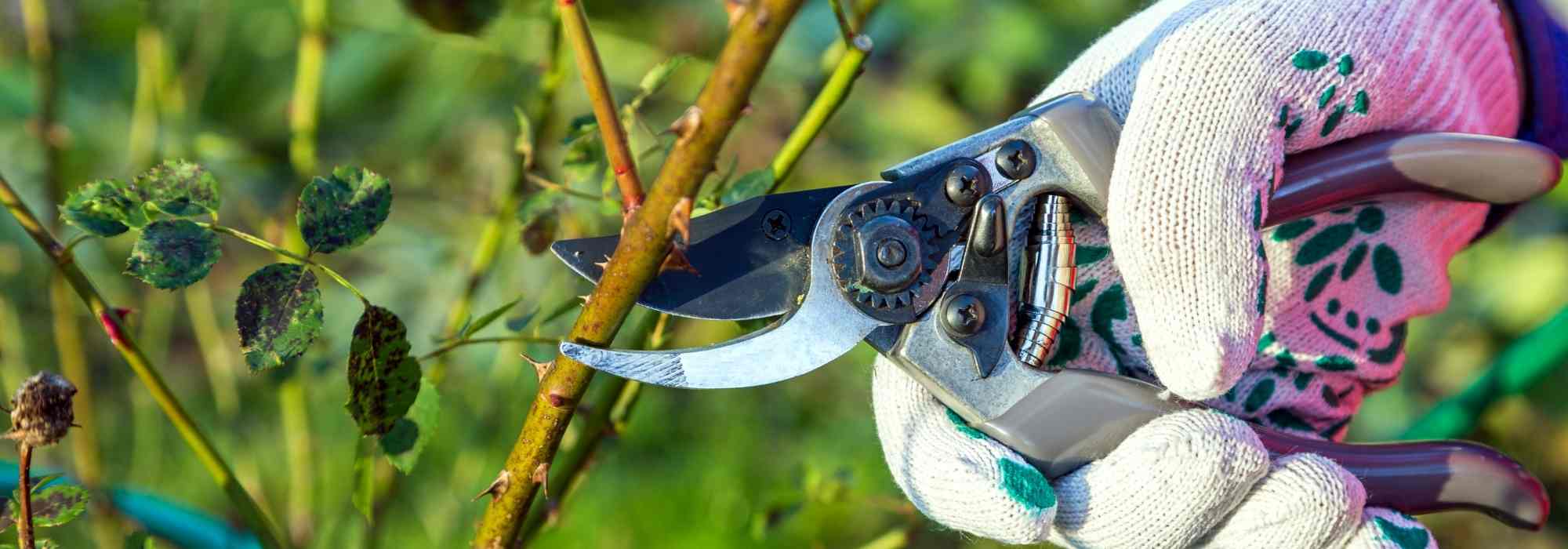
Caring for roses: the right equipment
Pruning shear, spruce, gloves, garden waste bag...
Contents
True symbols of romance and elegance, rose bushes are among the most commonly grown flowers in gardens! Easy to grow, rose bushes do however require a little maintenance. Once well planted, you will need to tend them regularly so they remain vigorous, harmonious and floriferous! Pruning, removal of spent flowers and suckers, fertilising and other care: essential tasks to carry out to keep your rose bushes in top condition.
From pruning shear and loppers to gloves and stakes, discover essential small tools to have to hand to help with these tasks!
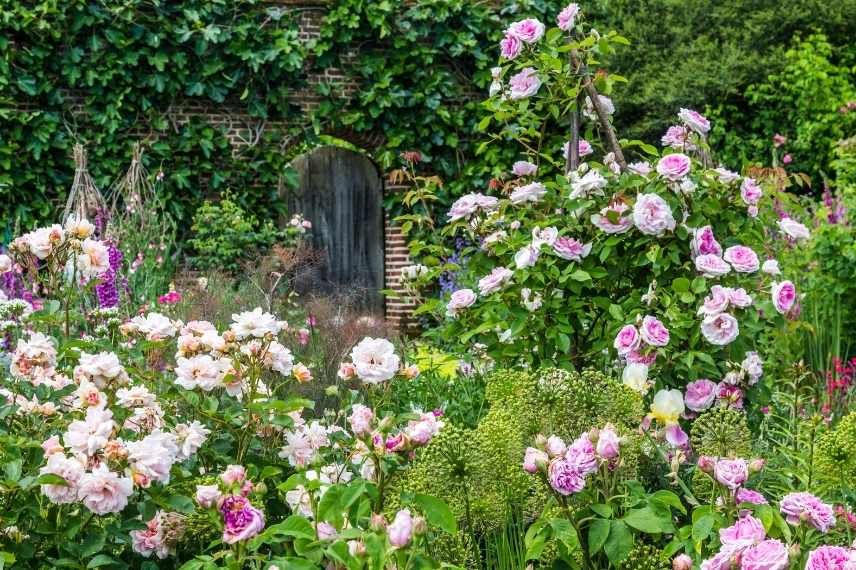
A beautiful rose garden requires specific maintenance and tools
Pruning roses
Pruning shears
Pruning rose bushes is essential to maintain a harmonious shape, vigour and good flowering. Rose bushes need to be pruned regularly. For this, a pruning shear is certainly the cutting tool you will use most often. Choose a quality, well‑sharpened model! It allows cutting rose branches. Forget anvil‑style pruning shears, reserved for cutting dead wood! Bypass pruning shears are used for cutting living or green wood, so they are ideal for pruning roses. This type of pruning shear has one blade sharpened on one face that slides along a counter‑blade: the two blades close like a pair of scissors to produce clean, precise cuts while minimising risk of injury to plants.
Alongside fixed‑handle pruning shears, some models have a rotating handle that reduces hand and wrist effort and fatigue, as well as blisters during repeated use. They come in all sizes, and should be chosen according to whether you are right‑ or left‑handed.
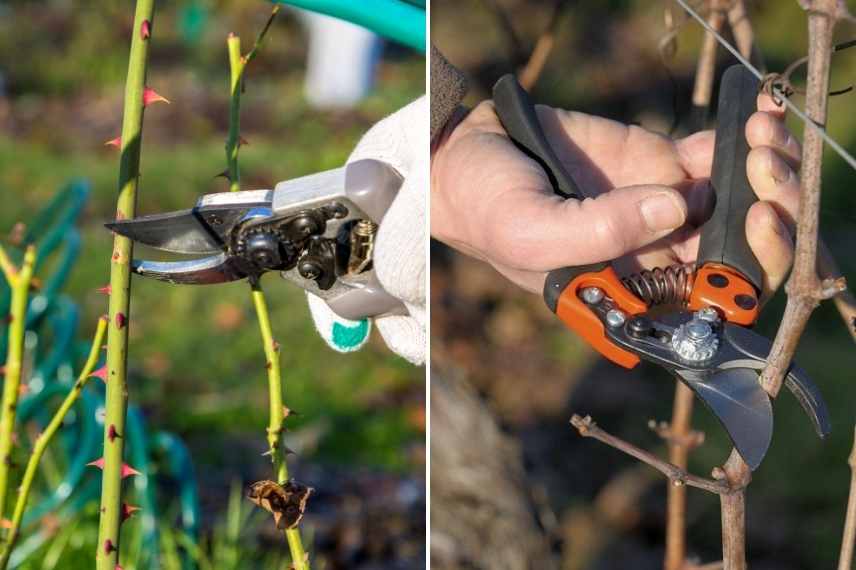
Pruning shears: traditional and with rotating handle
→ Follow our tips to choose the right pruning shear!
Loppers
Loppers are a type of very large pruning shear with long handles used with two hands. As with pruning shears, there are models with bypass blades for cutting living, green wood and anvil models for dead wood. Easy to use, the latter are used to cut large rose branches (20 to 40 mm diameter) that are beyond the capacity of a simple pruning shear.
The loppers are perfect for cutting dead, dry and/or hard branches and stems and for reaching less accessible areas, such as cutting back an old main branch, or pruning branches high up, those that cross or clutter the centre of the rosebush. They provide clean, quick cuts without crushing plant tissues. Models with telescopic handles are useful for pruning climbing roses without a stepladder, and also for cutting still‑green, flexible shoots from the centre of the bush.
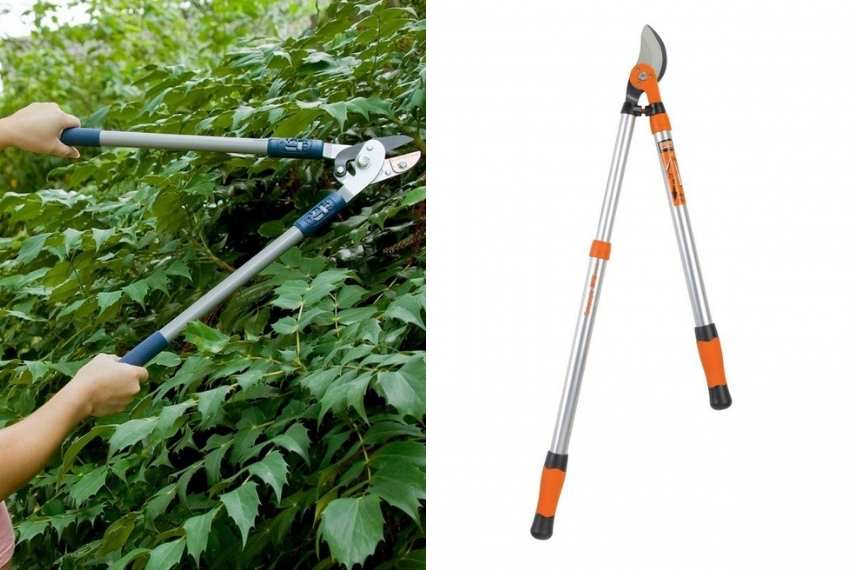
Anvil loppers (left); and telescopic loppers (right)
Shear
This is a sort of large pair of scissors used to cut green shoots, thick foliage and large branches. The shear or hedge shear is made of two straight steel blades extended by non‑slip handles. There are models with undulated or serrated blades, more effective but less precise. Although mainly used for hedge maintenance, it can also be used to prune shrub roses, climbing roses and lianas, as it makes it easy to cut through a mass of leaves and stems. Some hedge shears are fitted to a pole for pruning at height without a ladder.
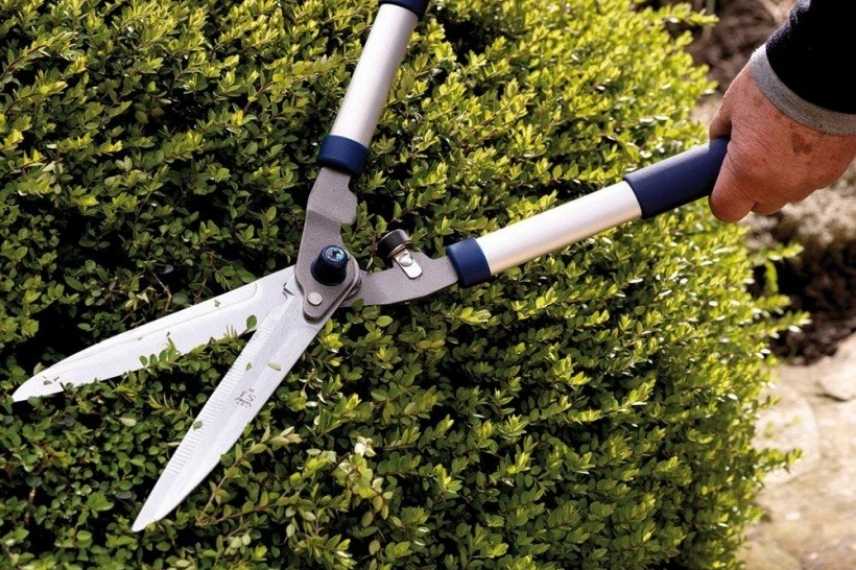
Pruning saw
Equipped with particularly sharp teeth, it is an indispensable tool for cutting branches of small and large section. Turn to an all‑purpose pruning saw that will allow you to saw quickly through green, tender wood as well as dry, hard wood. It is the tool of choice for cutting old main framework branches whose diameter exceeds 6 cm.
A small pruning saw, with straight or curved blade, more manageable, will be perfect for pruning large‑diameter branches and shoots (dead or living): it slips into tight places and suits users who do not have a lot of strength!
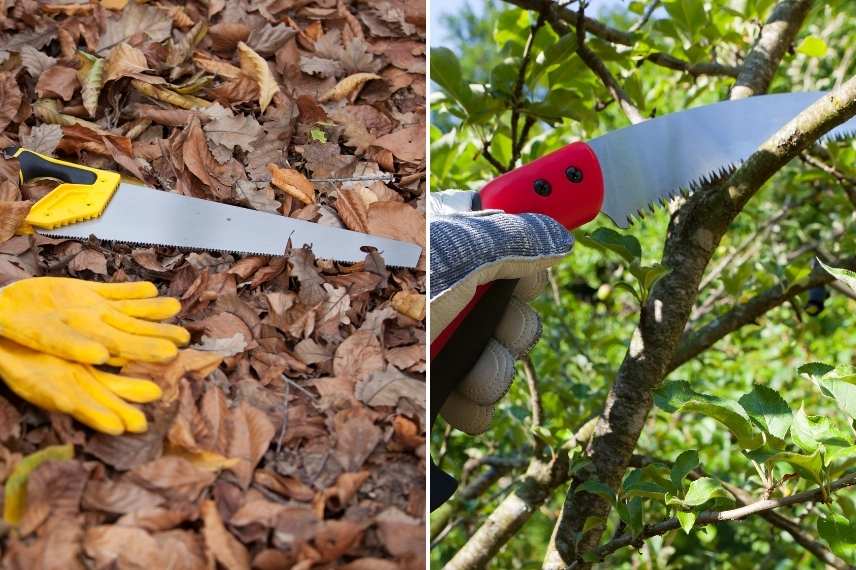
Hand saw (left), pruning saw (right)
Read also
Rose fertiliserTo remove spent flowers and suckers
We recommend cutting faded roses regularly to avoid needlessly exhausting rose bushes, unless you want to obtain rose hips. Besides aesthetic benefits, removing these faded flowers stimulates the appearance of new flower buds. Rose bushes can also produce suckers, shoots that grow rapidly and originate below the graft. These non-floriferous stems also exhaust the plant, so they should be removed by cutting them back to the base.
Fruit pruners or pruning shears are lightweight, manoeuvrable and precise cutting tools, fitted with a narrow, long and tapered head that facilitates access to thin stems tucked into the foliage. Their two straight, pointed and slightly dentate blades will allow you to make very clean cuts at the base of stems of faded roses as well as suckers.
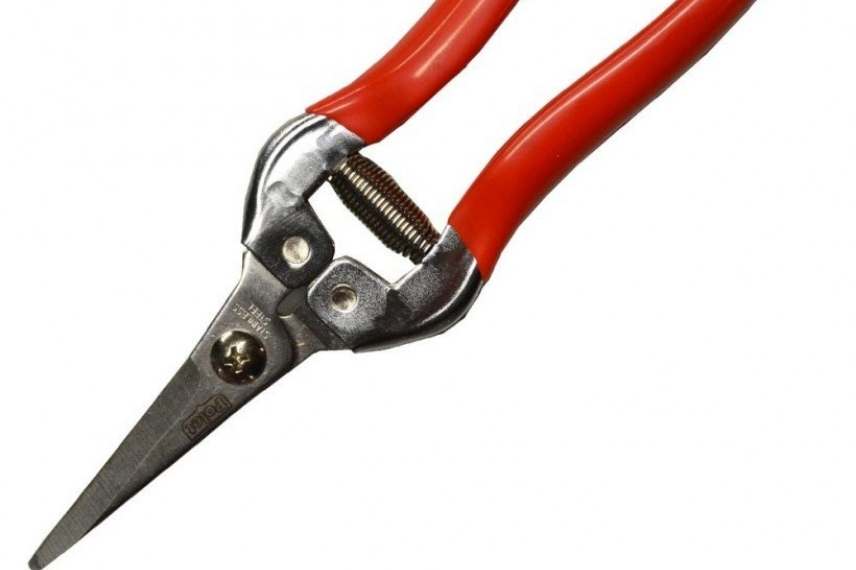
Fruit pruner or pruning shear
Discover other Roses
View all →Available in 0 sizes
Available in 0 sizes
Available in 2 sizes
Available in 2 sizes
Available in 2 sizes
Available in 2 sizes
Available in 2 sizes
Available in 2 sizes
Available in 3 sizes
To apply fertiliser
Roses are hungry plants that need feeding once or twice a year. Spade, consisting of a flat head, more or less round and more or less concave, is a very useful tool that will allow you to add organic amendments necessary for proper development of your roses or to replace soil of a rose to be transplanted.
Garden claw or hand fork is the complementary tool for incorporating amendments useful to your roses thanks to its fork-shaped head fitted with three or four sharp, curved tines.
Whether grown in pots or in ground, we recommend feeding roses (compost, manure, horn meal, blood meal, Or Brun… ). This will help them be very floriferous and healthy; ideal is to provide gentle, regular fertilising solutions from planting through growing season. Special rose fertilisers promote rooting, improve soil and feed plant sustainably and deeply.
→ Feel free to browse our full range of fertilisers for roses.
Read also
Pruning rosesTo support them
You have just finished planting your rosebush. Roses can be left to grow freely, or trained on a wall, a fence or a pergola. Certain forms of rose, often very vigorous, need to be supported because over time they tend to collapse. If your rose is climbing, standard or weeping, now is the time to tie it up!
- For standard and weeping roses, a stake is necessary from planting. It supports the branches of the roses effectively. We recommend bamboo stakes at least 3 cm in diameter, to be placed directly at the bottom of the planting hole at the same time as or just before the rosebush so as not to damage its roots: stake height should correspond to graft height. Use suitable ties (rings, plastic ties, soft ties, raffia, etc.) to attach the rosebush to its stake.
- To guide growth and support foliage of roses grown in pots, consider using a ladder trellis well suited to smaller roses. Provide tie systems, soft ties, rings or clips to secure the rosebush.
- Climbing roses will be trained against their support during the first years of growth and each year thereafter as they shoot. It is important to choose ties that allow stems to be fastened securely to their support without damaging them. I recommend soft plastic ties (our Biflex ties are perfect for fastening branches to their support without risking injury) and they do not deteriorate over time.
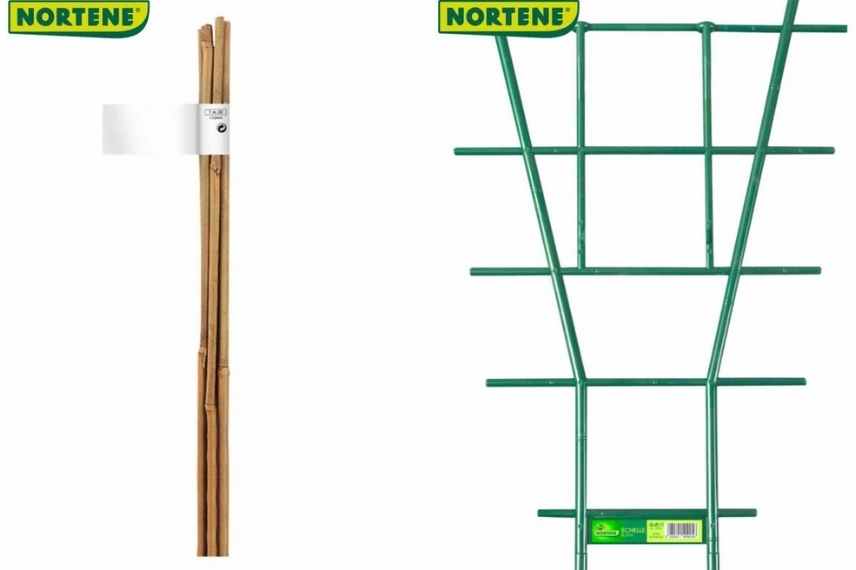
Bamboo stake and ladder trellis
→ Discover our tying equipment suitable for guiding and supporting your rosebush.
For potted roses
It is entirely possible to to grow potted roses on a balcony or terrace with some regular care. Bear in mind that potted roses need more attention than roses grown in the ground. Watering will need to be much more frequent: so plan to invest in a watering can!
You should also pay attention to fertiliser applications during growing season, as roses are heavy feeders and their flowering should be supported with a rose-specific fertiliser.
Roses thrive in a well-draining substrate. In a pot, moisture must be able to drain away so as not to encourage fungal diseases to which roses are susceptible. To improve drainage, place drainage materials such as clay pebbles or pumice at the bottom of the pot or mixed with the soil. To obtain a good substrate, make this mix with a good compost for roses.
And, to prevent or naturally control rose diseases, discover our range of suitable treatments!
Other useful small items
- Tools in perfect condition and clean guarantee good plant health! Always keep a bottle of methylated spirits and a cloth to disinfect tool blades after use, between each rosebush, to avoid spreading possible diseases. This practice also helps keep tools in good condition.
- Nothing worse than working with pruning shears with blunt blades: tools with poorly sharpened edges increase risk of tendonitis and will tire you more quickly. Pruning shear blades should be regularly sharpened using a sharpening stone.
- Equip yourself with a good pair of “rose-specific” gloves, coated with a thick latex that is highly tear-resistant, waterproof and non-slip — essential for protecting you from thorns!
- When caring for your roses, also remember to collect fallen leaves from the ground, especially if they show black spots or powdery mildew. A green waste bag is an essential gardener’s accessory. It is very useful for carrying pruning waste from roses.
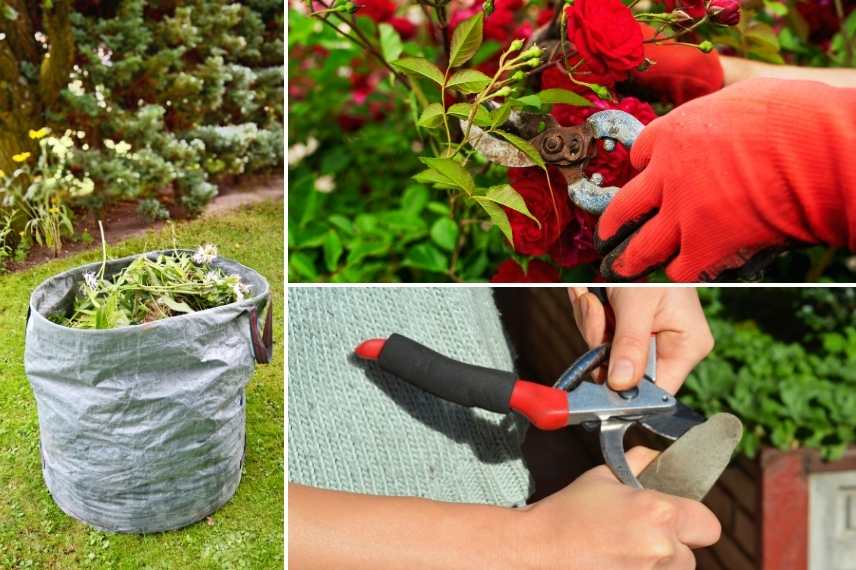
Green waste bag, rose-specific gloves and pruning shear sharpener are essential
Finally, discover the rose fork, the perfect tool to loosen soil and weed at the base of rosebushes!
- Subscribe!
- Contents
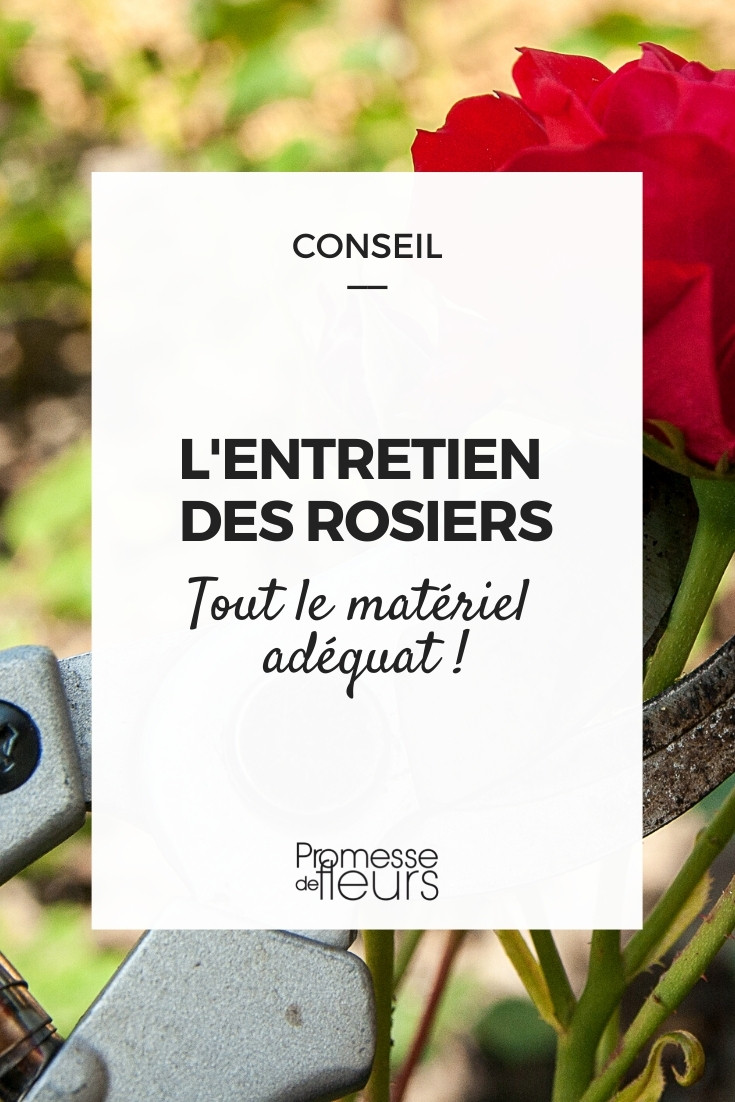































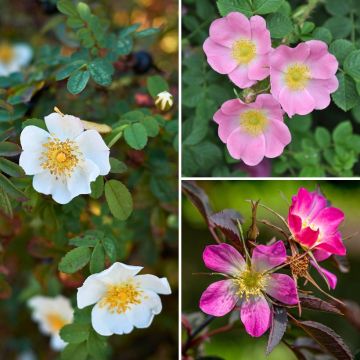
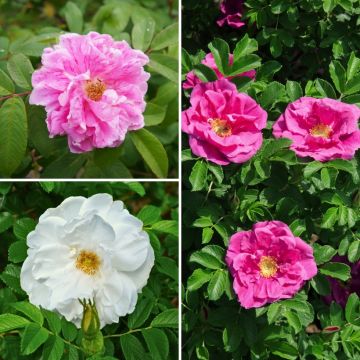

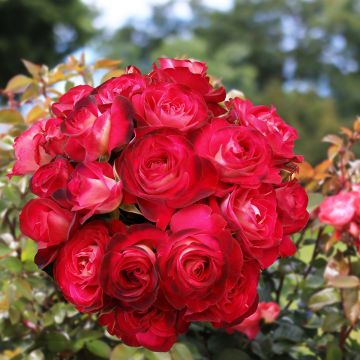
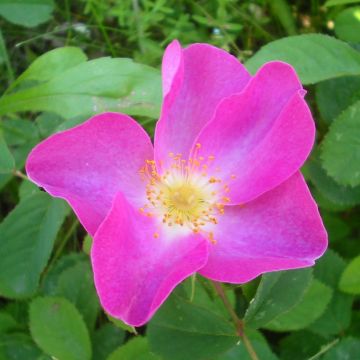
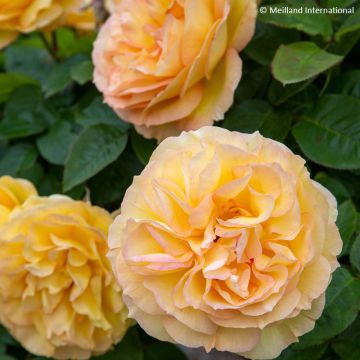
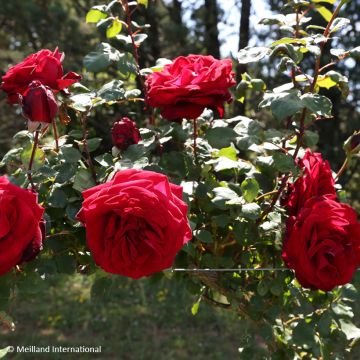
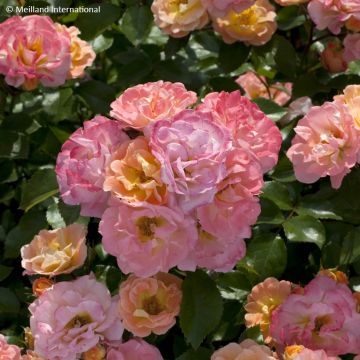
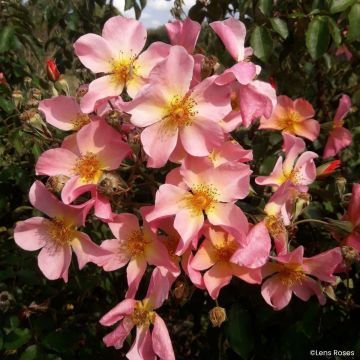
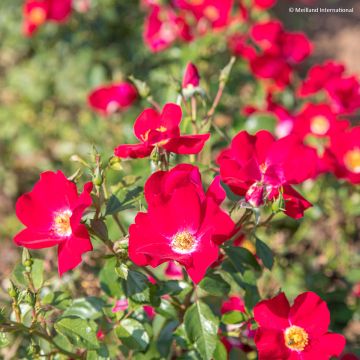
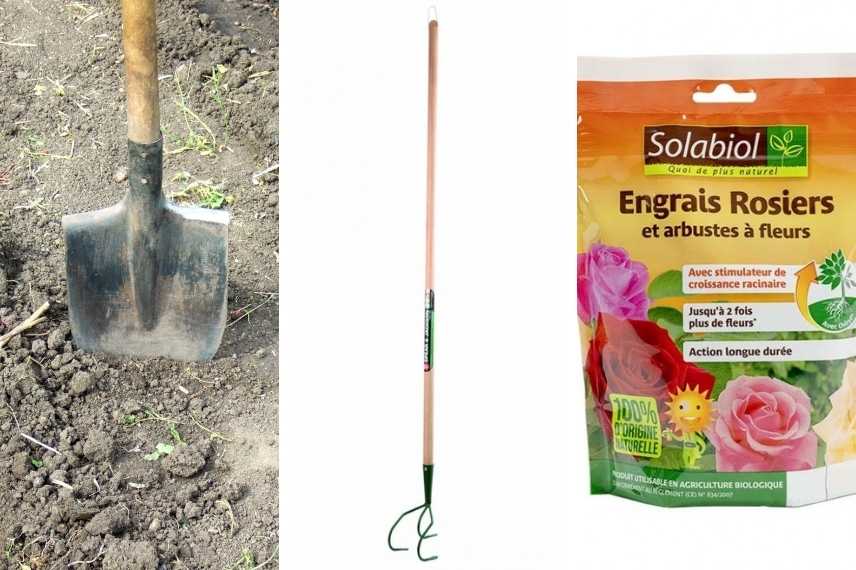
Comments